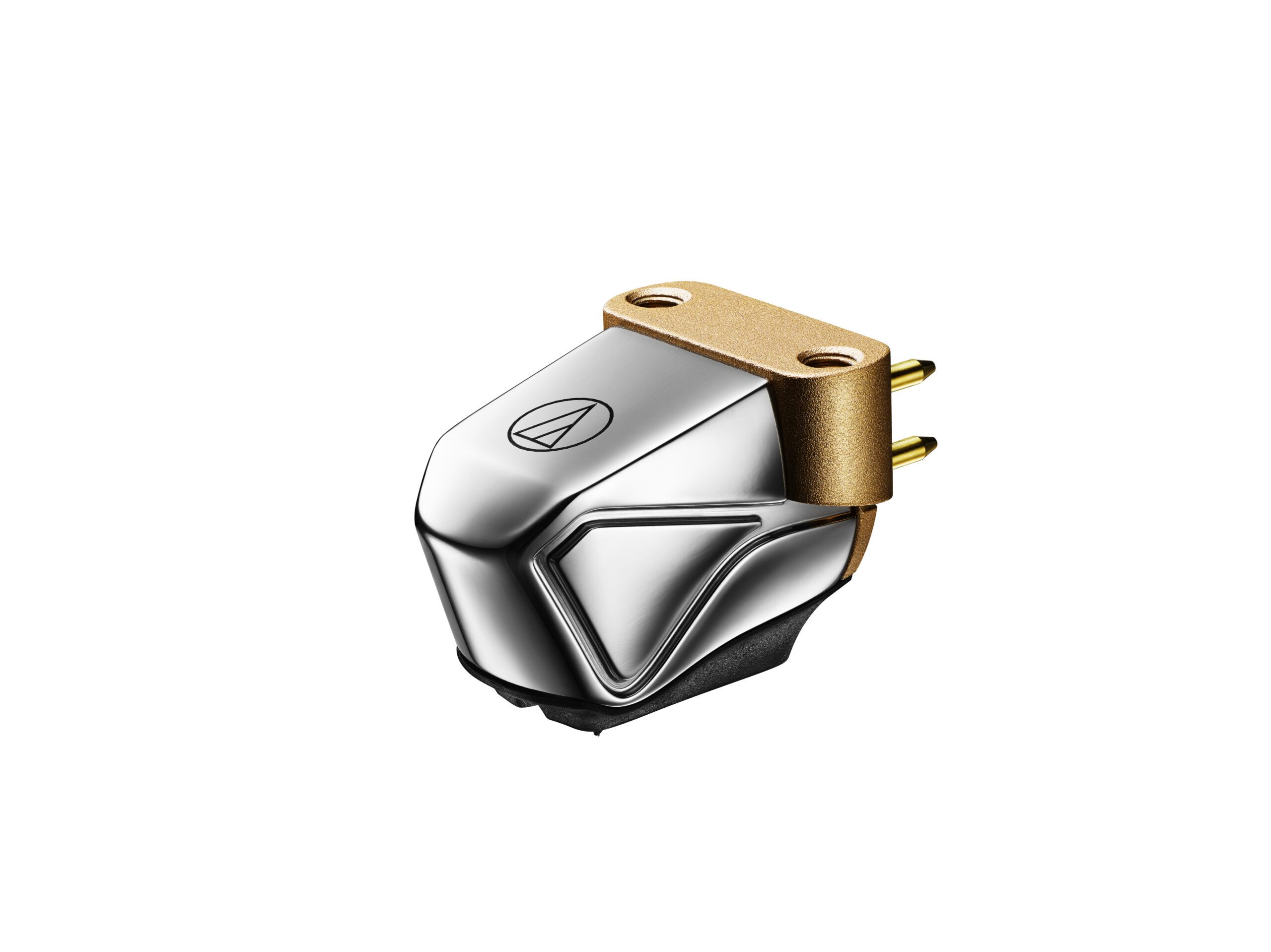
Perception is a funny old thing. When we view an object that, depending on your opinion of the world, is either high-end or ‘high-end adjacent’, the wider activities of the company that makes it, shapes how we perceive that object; simply ask any mainstream car manufacturer who has decided to push into new price points.
The Audio Technica AT-ART 20 is a case in point. At a little under three grand, this is a pretty serious cartridge and one that slots in directly beneath the AT-ART1000 flagship. Where many of the ART20’s notional rivals are part of ranges that barely dip into three figures, you can buy a cartridge with the same badge as the ART20 for £34. Rather than being the artisanal passion project of a small concern with a beard to employee ratio hovering around the 1/1 mark, this is a considered launch from a concern that has actual corporate trimmings. How much this matters to you is something I leave to you to decide.
Scaling Up
The mechanicals of the Audio Technica represent a scaling up of the AT-ART9XI that sits below it in the range rather than a trickling down of the ART1000 and its distinctive ‘Direct Power’ system where the exposed coils are on the end of the cantilever. In the ART20, the front yoke has been thickened up so that the magnetic flux density and with it, power output is improved so this is not simply the same innards in a ritzier chassis. Output is quoted at 0.5mV so the Audio Technica should not be a challenge for most phono stages.
The stylus is a line contact type in a nude mount fitted to a boron cantilever. This cantilever is fairly unusual because, rather than being made in a single section, it is comprised of separate parts that increase in thickness to create a stepped taper. This achieves the dual benefit of reducing the mass compared to a cantilever that is the same thickness all the way down while also improving resonant behaviour. Something that has been taken from the ART1000 is a titanium tip reinforcement plate, further reducing the effective mass.
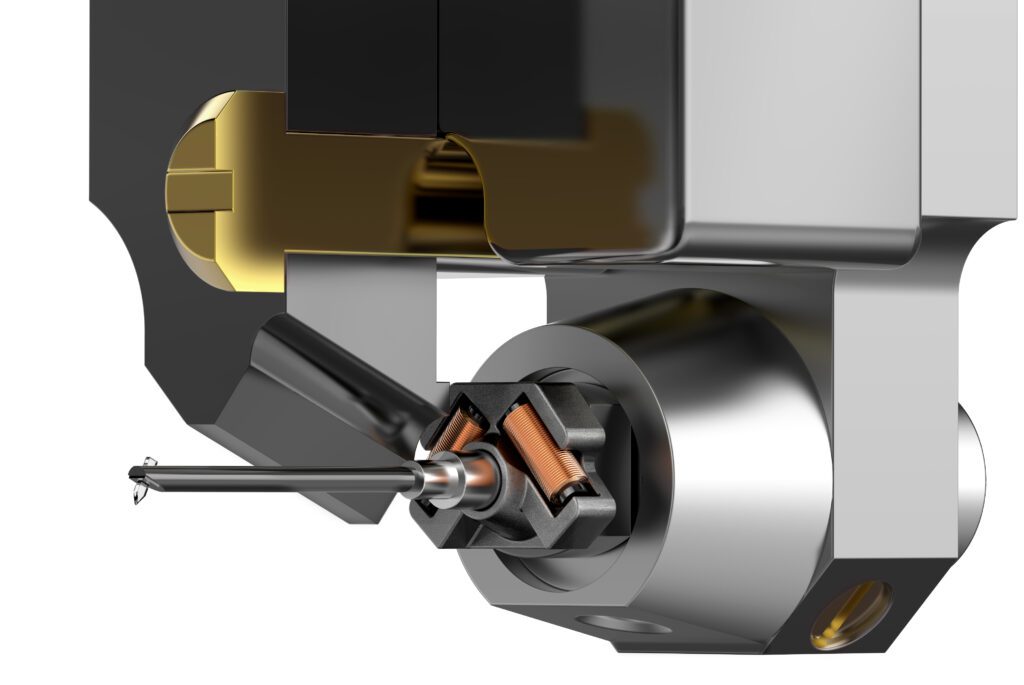
Something that may shape your decision making to go with the bigger company over the bespoke one is that the facilities available to Audio Technica do allow for a level of technical sophistication that is beyond smaller concerns. The body of the ART20 combines an aluminium lower plate, something of an Audio Technica trademark, with an upper section that is made from a titanium shell with an elastomer underneath to better control resonance. The nine gram weight (less fixings) should also mean the ART20 isn’t an issue for most tonearms.
Curved and polished
The body is then curved and polished to create a shape that is materially different to just about anything else on the market. Curved body cartridges are not unheard of but the combination of curvature and metalwork is rather more unusual. If you’ve ever yearned to have a cartridge that looks and feels like a Cylon Interceptor with a stylus, the ART20 is going to appeal. This distinctive aesthetic has been achieved without affecting practicality. Audio Technica’s belated but welcome decision to use threaded inserts on the body means that the ART20 is simple enough to mount.
The use of ‘mount’ as distinct to ‘set up’ is deliberate because getting the ART20 up and running did present some challenges. Mounting it in a Vertere SG-1 HB tonearm required the Audio Technica to be as far back in the headshell as possible before the alignment was correct (some running in was done on an SME M2-9 which did not have the same issue in fairness). The stylus tip of the ART20 is a significant distance in front of the mounting point and some attention will need to be paid as to whether your turntable can handle it.
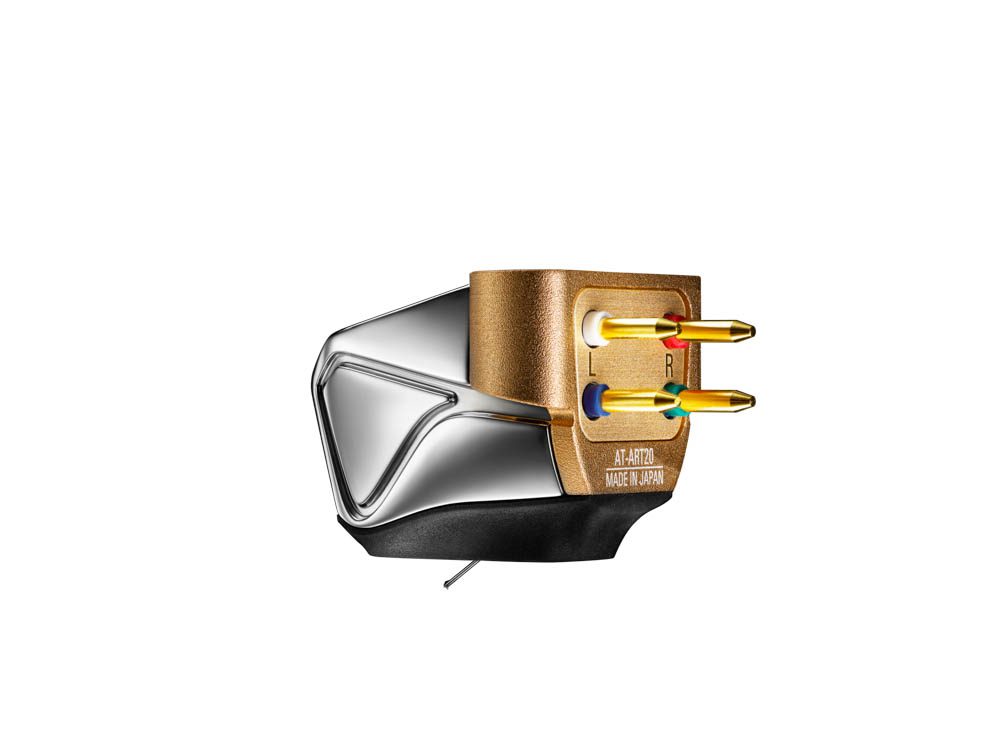
The recommended load impedance is also a little odd. Audio Technica gives the slightly open-ended suggestion of ‘more than 100 ohms’ but it was in fact only once I had the 1KOhm setting on the resident Cyrus Phono Signature selected that it really started to sound its best. Whatever comments you can make about Audio Technica being ‘mainstream’, the ART20 gives away nothing in idiosyncrasy to anything else I’ve tested at or near the price.
It is worth accommodating these whimsicalities though. Something that Audio Technica does very effectively with all their cartridges is avoid much in the way of superficial ‘character’ creeping into their performance. While some older models might reasonably have faced the accusation of being on the bright side of neutral, most newer models from the £34 VM-95C upwards have a commendable even handedness to how they go about their business. The ART20 takes this ideal and runs with it.
Entirely unembellished
What this translates to is a cartridge that feels entirely unembellished. Where many similarly priced rivals you might shortlist against it can lay claim to ‘holographic mids’ or something similar denoting a particular point of the frequency response grabbing your attention, the ART20 is determinedly linear. This means that when you ask it to get stuck into Peter Gabriel’s Live in Athens 1987 (a less iconic but considerably less manicured performance than Plays Live and both on Real World records), the ART20 lets the performance happen. The delicate opening to San Jacinto that builds into something bigger and more forceful is handled effortlessly and there’s never a single point where you note a step change increase, so linear is the process.
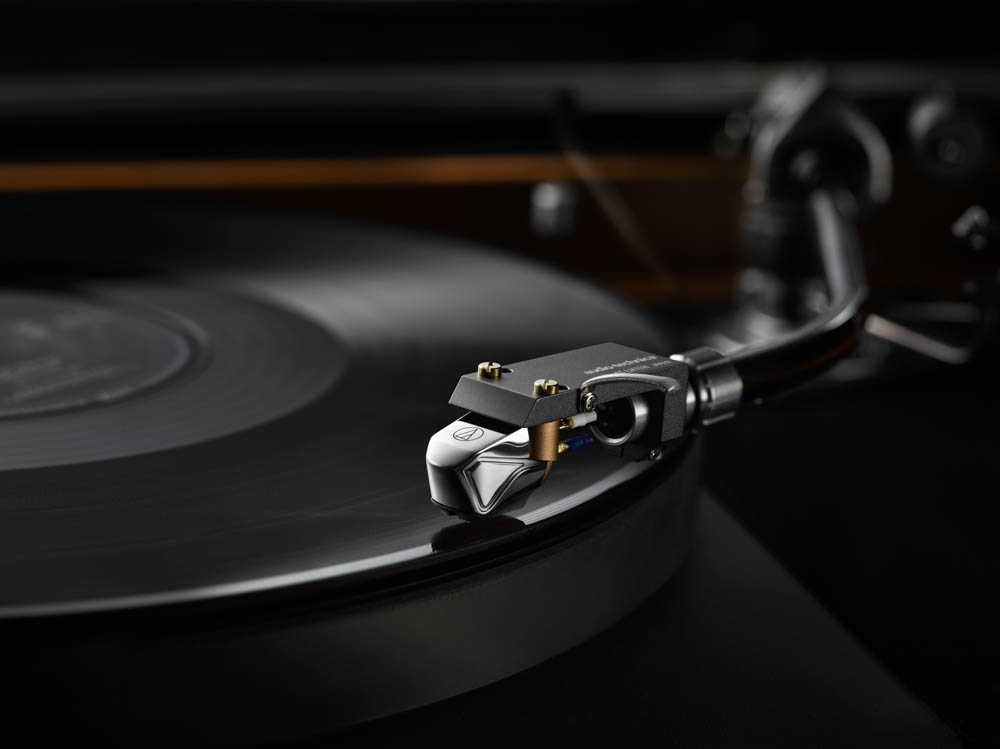
Aiding your perception is that this linearity extends well into both frequency extremes. The ART20 conspires to have both meaningfully deep bass and an impressively well-lit top end but it reaches these two extremes with such consistency, it takes a little while to appreciate it. This transparency comes with the almost inevitable caveat that the Audio Technica is not a device that forgives poor pressings, and it will show up limitations in your partnering hardware too. The payoff is an exceptionally unprocessed take on the information stored in the groove of the record. Mounted on the admirably transparent Vertere MG1 MkII, you have a pairing that imparts very little of itself in what you hear.
Throughout the standard pattern of throwing random corners of my record collection at the ART20 to see if it came unstuck (and any listening session that encompasses both Enya and the Boom Boom Satellites might safely be considered to contain a few extremes), the Audio Technica hasn’t strayed from the path it demonstrated fairly early on. You can listen to a specific record and think it might be better reproduced on something else but it’s extremely rare to find that it is the same cartridge doing better on more than one record. There are people involved in the ART20’s development who have thrown some outlier records of their own at it during development and it really shows.
That’s Genutainment!
All too often, when this theme of near universal competence is being discussed in a review, it comes with the rider that the result is not as specifically entertaining as some alternatives. What I’ve found interesting about the ART20 while it has been under test is that, for all the studied neutrality, it’s capable of genuine engagement. Listening to Lowell George’s Thanks, I’ll Eat It Here [Warner], the Audio Technica never struggles to find the joy in the album. George’s superb vocal turn in ‘What Do You Want The Girl To Do’ is effortlessly lifelike and the unwavering focus of your attention. It’s helped by a neat grasp of timing too. This is not a ballistic sounding cartridge, but it is hard to unsettle it. The varying tempos of Dropout Boogie by the Black Keys [Warner] are delivered with an assurance that means it all sounds ‘correct’ but more importantly it sounds fun too.
What results is a cartridge that plays about with the themes that Audio Technica attempts to embody in all its cartridges, but here it transcends them. The ART20 is an extremely appealing blend of exceptional all-round confidence and technical ability that is achieved without losing the joy and engagement needed to make this something you will want to keep listening to. So long as you can physically accommodate it, the ART20 delivers a performance that will rarely be phased by anything you choose to play.
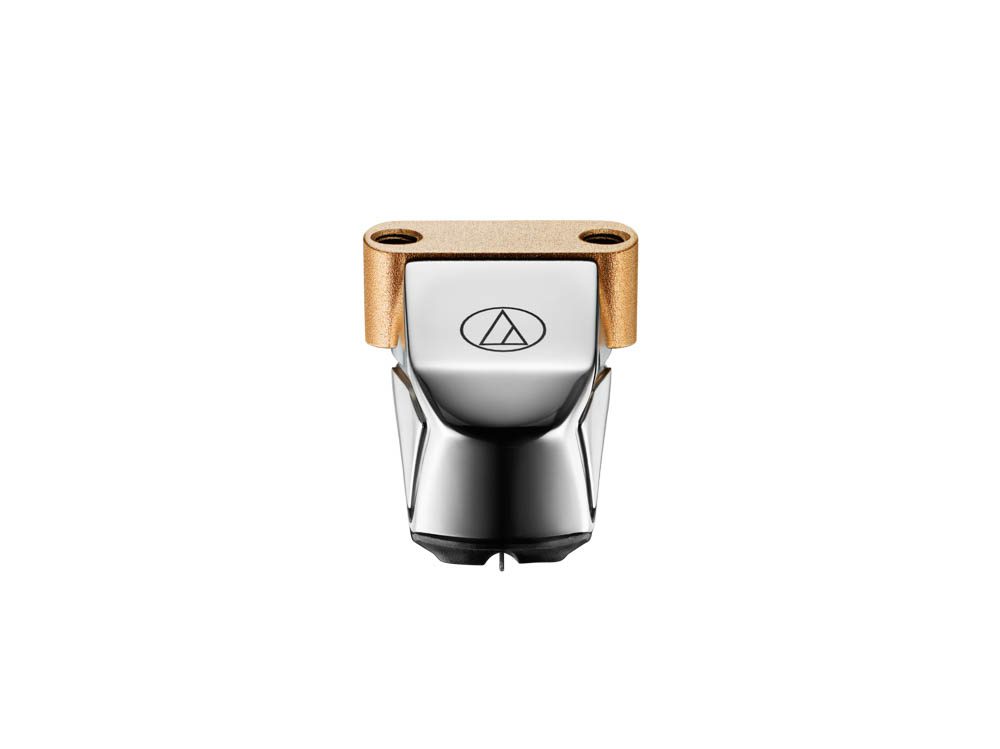
Some prefer to have their cartridges hand-rolled by aging samurai craftsmen, but Audio Technica’s size brings with it consistency and quality. The big company ethos hasn’t affected the ART20’s ability to be a serious high-end cartridge but it does ensure it is a formidable all-rounder at the same time.
Technical specifications
- Type Moving Coil cartridge
- Stylus Profile Special Line Contact
- Stylus Construction Nude
- Output Voltage 0.55V (1kHz, 5cm/s)
- Frequency Response 20Hz–50kHz
- Channel Separation 30dB (1kHz)
- Vertical Tracking Angle 20°
- Vertical Tracking Force 1.6-2g (1.8g standard)
- Recommended load impedance ≥ 100Ω (when head amplifier connected)
- Coil Inductance 25µH (1kHz)
- Price £2,749
Manufacturer
Audio Technica
+44 (0) 113 277 1441
By Ed Selley
More articles from this authorRead Next From Review
See all
PrimaLuna EVO 100 phono preamplifier
- Apr 22, 2024

Reiki Audio SuperSwitch Master Pro + Servant Pro
- Mar 27, 2024

Melco Audio N1-S38 music server
- Mar 27, 2024











